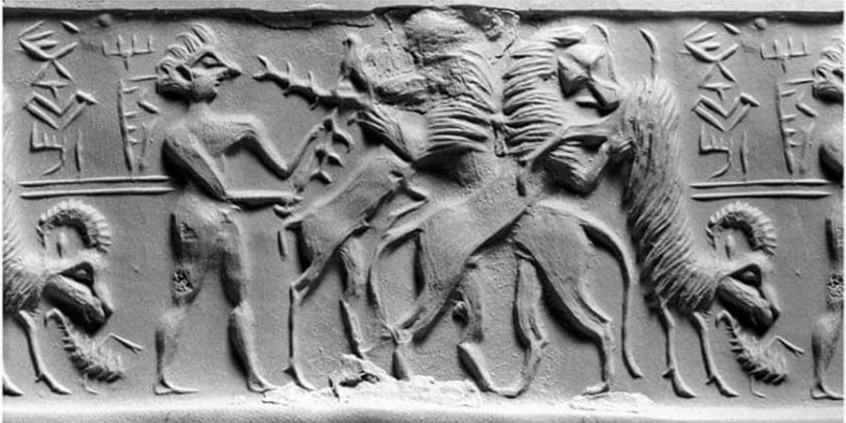The Greek historian Herodotus describes the cultural progress of ancient Iraq:
“Every person in Mesopotamia, ancient Iraq, had a seal used as a signature, with which he signed the soft wage in the last letters or contracts written on him.”
This indicates that the people in Mesopotamia were generally educated and used writing in their daily dealings at a time when the world was expressing itself in painting.
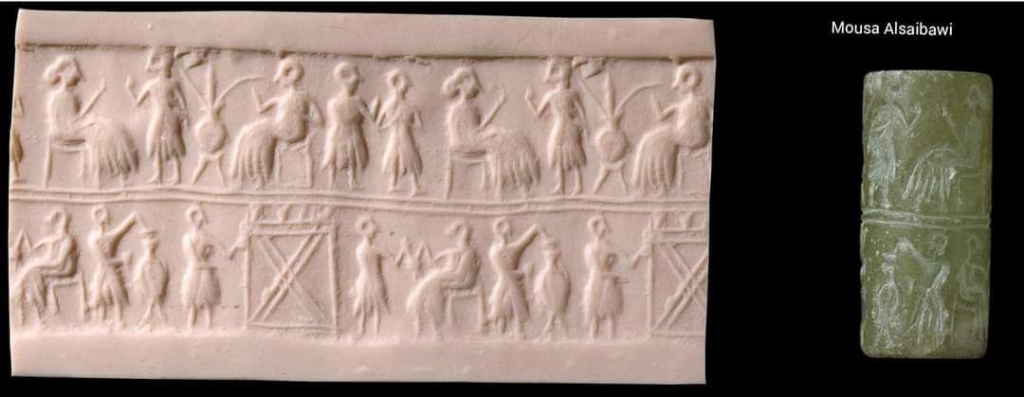
2600 BCE Sumerian civilization Ur Iraq
Description Marble cylinder seal green semi-transparent design in two parts above two attendants stand behind a woman who receives a cup from a third attendant and a man drinks through a straw from a large vessel probably containing beer below attendants stand on either side of a table covered with food and one of them is handing food to a seated man; a third attendant is filling a cup from a large pot on a stands
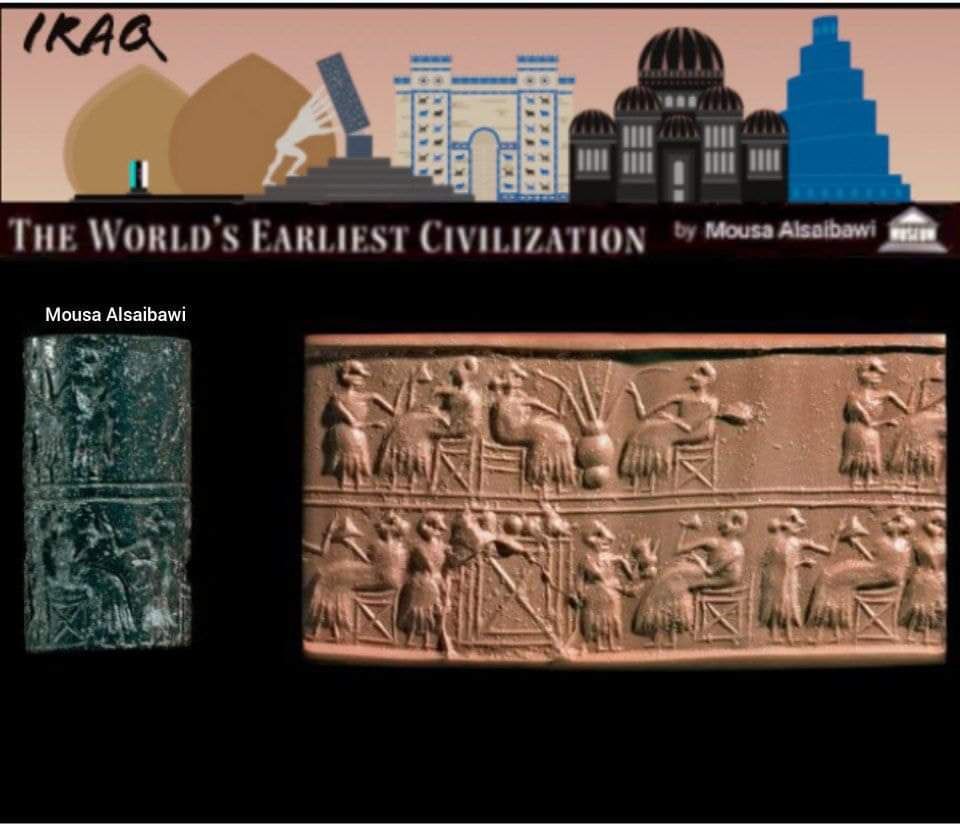
Lapis lazuli cylinder seal inscription the design is divided into two parts, both showing banquet scenes above – figure stands before seated person who drinks from a goblet, two seated figures drinking by pipe or straw from a large vessel below – man stands before table? and pot-bearer before seated dignitary a cup-bearer before another seated person. The seated figures on both registers consist of a man and a woman who is possibly Pu-abi
Royal Cemetery Ur Iraq mesopotamia
2600BC
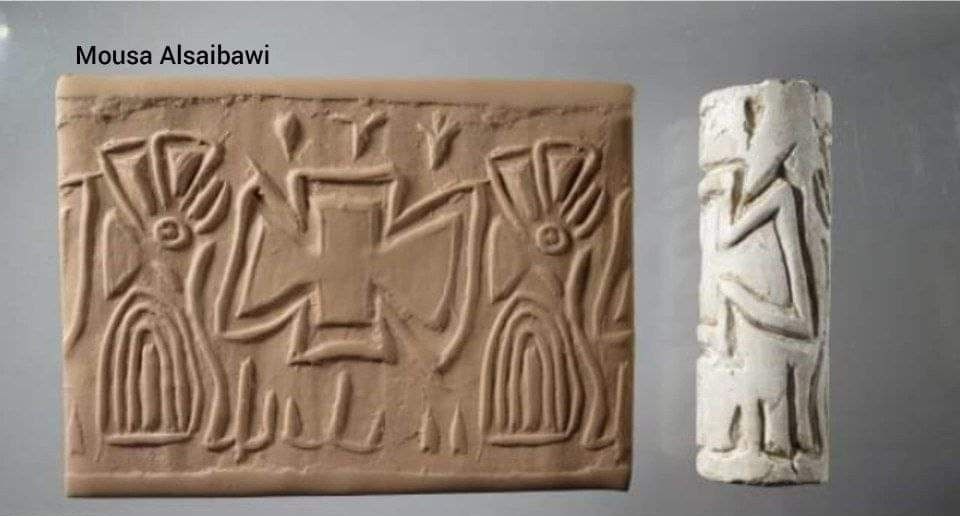
Country: Iraq Mesopotamia 3300 BCE
Place/site: Khafajeh
Khafajah lies on the Diyala River, a tributary of the Tigris.The site consists of four mounds, labeled A through D. The main one, Mound A, extends back as far as the Uruk period and contained an oval temple, a temple of the god Sin, and a temple of Nintu. The Dur-Samsuiluna fort was found on mounds B and C. Mound D contained private homes and a temple for the god Sin where the archive tablets where found in two heaps.
The Sin Temple was probably dedicated to the moon god Sin, also known as Nanna in the Sumerian language. This identification is based on the evidence of small crescent moons found within the temple.
The construction of this temple began in 3300-2900 BC (late Uruk or Jemdet-Nasr period), and at least 10 architectural phases have been identified in the subsequent rebuilding that continued. The temple’s last phase was during the Early Dynastic III period
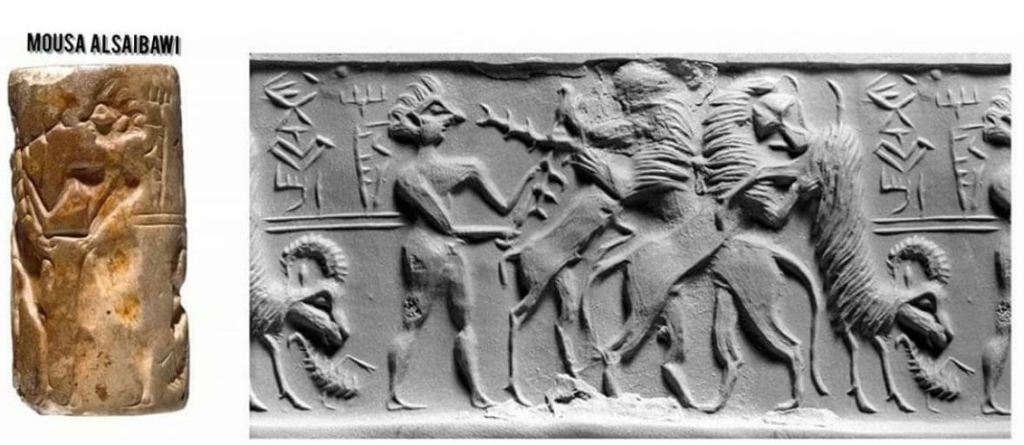
Sumerian civilization Ur Mesopotamia iraq
Nude Hero Grappling with Lions Attacking Horned Animals 2550- 2400 b.c.


